Device Manager is a utility in Windows 11/10 that allows you to view and manage devices and their drivers. If the Device Manager is not opening or keeps crashing on your Windows computer, you cannot view or manage the hardware devices connected to your system. This article shows you how to fix this problem.
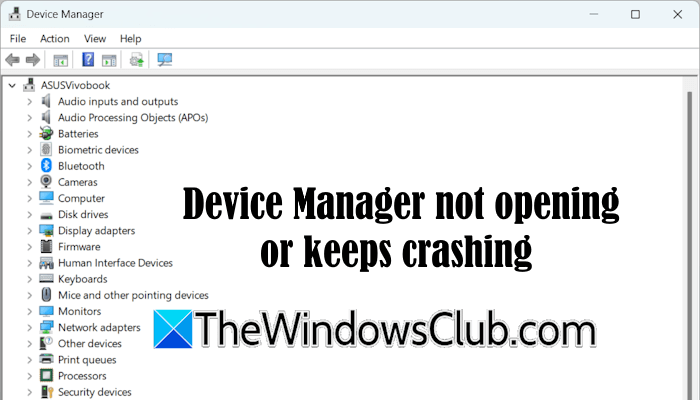
Device Manager not opening or keeps crashing on Windows 11/10
Use the following fixes if the Device Manager is not opening or keeps crashing on your Windows 11/10 device.
- Check for Windows Update
- Repair your system image files
- Check the issue in a Clean Boot state
- Create a new user profile
- Use a third-party driver updater software
- Restore your system
- Perform a Repair Upgrade or reset your PC
All these fixes are explained in detail below:
1] Check for Windows Update

Sometimes, issues on a Windows computer occur due to a bug. Such types of issues are fixed by installing the latest Windows Update released by Microsoft. Open Windows 11 settings and check for Windows Update. If a Windows Update is available, download and install it.
Read: Device Manager is blank and not showing anything in Windows.
2] Repair your system image files
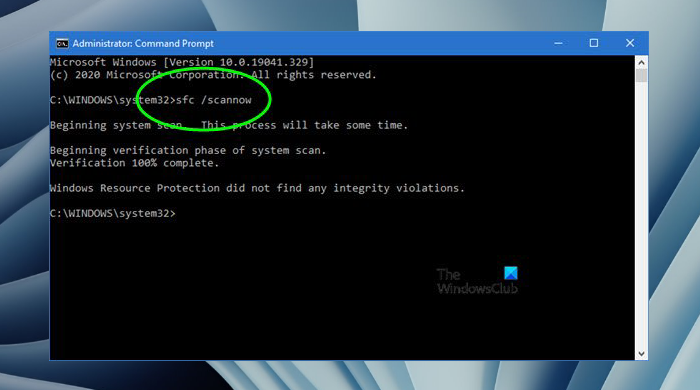
The next fix that you should try is repairing your corrupt system image files. Launch the System File Checker and DISM tools and run a scan. It will take time. Do not turn off your computer till the scan is completed.
Related: Device Manager Blinking or Flickering in Windows 11
3] Check the issue in a Clean Boot state
A background third-party application or service might be interfering with the Device manager, causing it to crash or preventing it from opening. You can check this in the Clean Boot state. First, launch the Task Manager and disable all background applications. Now, restart your computer and launch the Device Manager. If the issue persists, you need to find the conflicting third-party service.
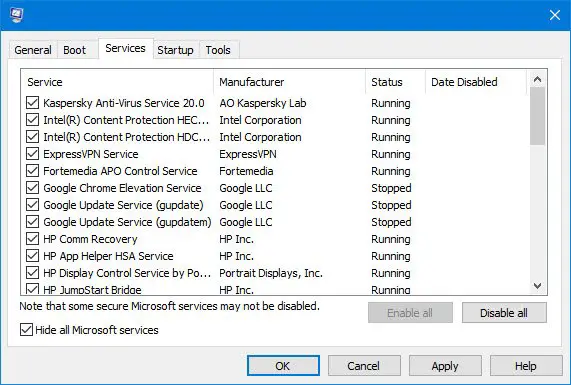
Enter the Clean boot state by using the System Configuration utility. Be careful while using the System Configuration utility. Do not disable the Microsoft Services, otherwise, you will not be able to use your computer. Once you are in the Clean Boot state, launch the Device Manager. If it does not crash, a third-party service is the culprit. Find out that service and uninstall the respective application.
4] Create a new user profile

Sometimes, problems are associated with a particular user profile. I suggest you create a new user profile on Windows 11 and log in to that profile. Now, launch the Device Manager and see what happens. If the issue does not persist, you can transfer your user data from the previous profile to the new profile and keep using that profile. You can delete the old profile later. Many free tools allow you to transfer your data from one profile to another on Windows.
Related: Device Manager keeps refreshing constantly in Windows 11
5] Use a third-party driver updater software
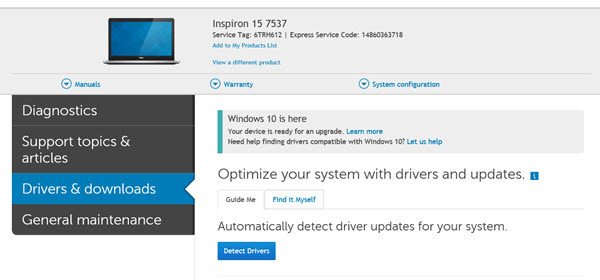
One possible cause of this issue is a corrupt driver. Since you cannot use the Device Manager to check the status of the drivers installed on your system, you have to use a third-party driver updater tool. The driver updater software will scan your system and show you the outdated drivers.
Now, you can use either the same third-party software to update that driver or download the driver from the official website of your computer manufacturer.
6] Restore your system

System Restore is a useful tool on Windows 11 computers that allows users to restore their computers to the previous working state. However, a restore point should be available to restore your computer. Run System Restore and select the restore point (if available) created before the date the problem started.
7] Perform a Repair Upgrade or reset your PC
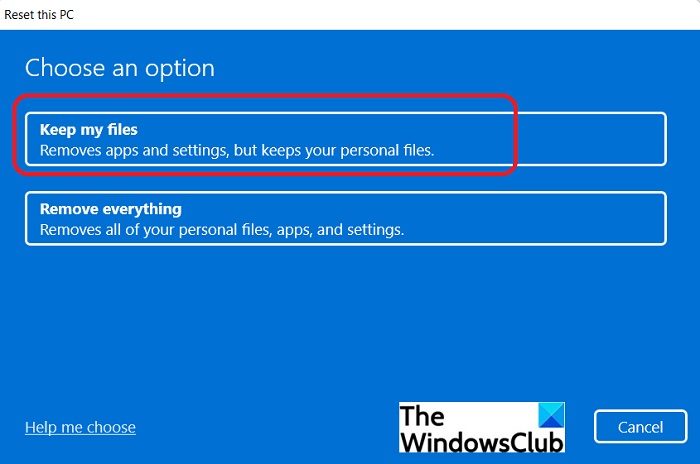
If the problem persists, it’s time to repair your computer. Reset your PC to the factory default settings without deleting your data. Alternatively, you can also perform an In-place upgrade. This step will reinstall Windows 11 on your system without uninstalling the currently installed Windows 11 OS.
Both of these steps do not delete your data. However, from a safety point of view, I recommend that you back up all your necessary files before proceeding.
I hope this helps.
Read: Device Manager keeps refreshing constantly in Windows.
How do I fix Windows 11 constantly crashing?
If your Windows computer keeps crashing continuously, monitor your CPU and GPU temperatures. If the temperature rises beyond the safe levels, the fan is not working or the thermal paste has been worn out. Crashing issues also occur due to bad or outdated drivers.
How do I fix boot failure in Windows 11?
A boot failure on Windows 11 occurs due to several causes, such as a dead CMOS battery, faulty power cable or power supply, outdated BIOS, etc. To fix this issue, you can apply some fixes, like updating BIOS to the latest version, resetting BIOS to the default settings, running the Startup Repair, etc.
Leave a Reply